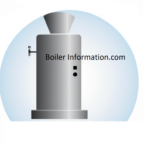By default port 1433 is not interpreted as having TLS; the default for TDS is to be unencrypted. I use this oneliner as root. X.509 certificates for authentication are sometimes also called SSL Certificates. This should give you something like the following. If we start looking through these packets we come across something very interesting in unencrypted, plain text. Since Wireshark 3.0, the TLS dissector has been renamed from SSL to TLS. Initial infection activity also includes the malicious file loading an installer for Dridex. In addition to previous answers, version with netcat nc might be useful as well: tcpdump -i em0 -s 0 -U -w - > /tmp/mypcap.fifo. In our case this will be Ethernet, as were currently plugged into the network via an Ethernet cab. If possible please share the pcap. You can create a special shortcut using Wirsharks command-line arguments if you want to start capturing packets without delay. Open 2020-09-29-Dridex-infection-traffic.pcap in Wireshark and use a basic web filter, as shown in Figure 20. Since we launched in 2006, our articles have been read billions of times. For more information about TSharks command line options, check out its manual page. rev2023.5.1.43405. Not wireshark, but for me the Microsoft Message Analyzer worked great for that. This includes Python. You can modify the rules behavior by unchecking the Inbound or Deny checkboxes. What I have posted in the image above is all I can see. So actually the only accurate way to determine the host is to first get it from SNI and then compare whether that hostname has a matching A record for the IP (3+1). Have phun! However, by using the tools that Wireshark provides, you can easily identify the web server engine that is being used. https://en.wikipedia.org/wiki/Transport_Layer_Security Wikipedia article for TLS, https://sharkfesteurope.wireshark.org/assets/presentations16eu/07.pdf SharkFest'16 EU presentation by Sake Blok on troubleshooting SSL with Wireshark/Tshark (or watch the video of the presentation at https://youtu.be/oDaDY9QCnXk), https://lekensteyn.nl/files/wireshark-ssl-tls-decryption-secrets-sharkfest18eu.pdf SharkFest'18 EU presentation by Peter Wu on TLS decryption (video for an earlier talk in Asia at https://youtu.be/bwJEBwgoeBg). By analyzing the network traffic, you can get an idea of what type of web server engine is being used. HTTPS traffic from such servers often generates error messages when viewed in modern browsers, such as Firefox, as shown in Figure 9. 2023 LifeSavvy Media. The certificate issuer data follows the same pattern as our first two examples. This file can subsequently be configured in Wireshark (#Using the (Pre)-Master Secret). How-To Geek is where you turn when you want experts to explain technology. To learn more, see our tips on writing great answers. Applications using OpenSSL could use a GDB or a LD_PRELOAD trick to extract the secrets. As per this StackOverflow question, it appears that Microsoft Network Monitor is capable of parsing both levels of encapsulation. So by itself Wireshark will not parse it as TLS: In order to change this, right-click on one of the packets and select "Decode As". The key log file is generally recommended since it works in all cases, but requires the continuous ability to export the secrets from either the client or server application. In this article, we will discuss how to use Wireshark to find the web server engine. Is there something else I need to include in the display filter? This is wrong, as the MS-SQL-Protocol in use does SSL/TLS inside the protocol itself not on the outer most layer, which is quite common. This will allow you to see the logs that are being generated. Connecting to HTTP Web Server Wireshark Capture Networkbachelor 412 subscribers Subscribe 38 7.6K views 2 years ago Understanding the communication Where does the version of Hamapil that is different from the Gemara come from? Analysis Example - Recording is filtered for TDS - so the other packets are discared mostly: This is also true for sql server connections. First, select a packet you want to create a firewall rule based on by clicking on it. Identify the source of network path latency and, if possible, reduce it to an acceptable level. Original answer: Because those packets are not on a standard TLS port (e.g., 443) you need to tell Wireshark to interpret them as TLS packets. However, by using the tools that Wireshark provides, you can easily identify the web server engine When prompted for credentials, specify your user name in either user@domain.com or AzureAD\user@domain.com format. And the network interface (eth0) in not necessarily eth0. To change the protocol for decrypted network data, right-click on a TLS packet and use Decode As to change the Current protocol for the TLS port.
how to find web server in wireshark
by
Tags:
